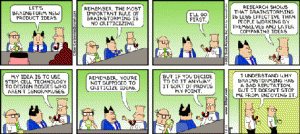The collaborative team guides its clients to work together to solve their problems. To attack problems efficiently, they follow these steps:
Step 1: Establish the ground rules. They are:
☞Be polite, patient, and honest.
☞Listen actively without interrupting the speaker.
☞Focus on the future and avoid unnecessary discussions of the past.
☞Focus on resolving conflict and avoid assessing blame.
☞Speak only for yourself, using “I” instead of “You” sentences. “You” statements throw blame on the other client and do not allow the statement-maker to admit to any culpability. Using “I” statements opens the discussion for exploration, creativity, and change in response to the situation.

Step 2: Identify and prioritize your interests and concerns.
Focusing on positions, rather than on interests, limits settlement options, and sometimes results in agreements that fail to satisfy the participants’ actual interests. Focusing on achieving goals, rather than on demanding satisfaction of positions, enables each client to identify his/her actual interests. Then the team can generate multiple settlement options to accomplish those goals.
Step 3: Address any temporary issues either of you may have. Certain temporary concerns must be tackled first because participants will not be able to effectively negotiate if they are fixated on urgent issues that they feel must be addressed now.
Step 4: Gather and exchange information. Initially in the collaborative process, clients exchange financial and other important material so that, when they come to the table to negotiate, they are fully prepared for those discussions.

Step 5: Brainstorm options. Brainstorming provides an open environment in which the entire team participates. The clients should feel as though their thoughts and opinions are being heard. The team will listen actively when brainstorming, but the process will have a relaxed and casual feel.
Brainstorming should be fast-paced so that participants don’t have time to self-evaluate or to arrive at preconceptions about options. No idea is a bad idea. Each person at the table should be encouraged to think outside the box and discouraged from criticizing each other’s ideas. Even ridiculous suggestions are acceptable because they may lead to other helpful ideas.
Step 6: Evaluate options. After thorough brainstorming, team members weigh, tweak, and trade options as they work to reach a final settlement. The team discusses the cost and benefit of each proposal to each spouse. The team asks each client to step into the other client’s shoes and analyze whether s/he would be happy with the proposal if s/he was on the opposing side.
Step 7: Select your best available options. After creatively brainstorming and evaluating the clients’ options, it is time for them to decide. No one forces a decision. It is their process, and, ultimately, they are the ones who have to live with the decisions that they make.
Need advice now? Contact Joryn!
About this week’s author: Joryn Jenkins.
Joryn, family attorney and Open Palm Founder, began her own firm here in Tampa after a 14-year career in law while also serving as a full-time professor in law at Stetson University. She is a recipient of the prestigious A. Sherman Christensen award, an honor bestowed upon those who have provided exceptional leadership to The American Inns of Court Movement. For more information on Joryn’s professional experience, take a look at her resume.













